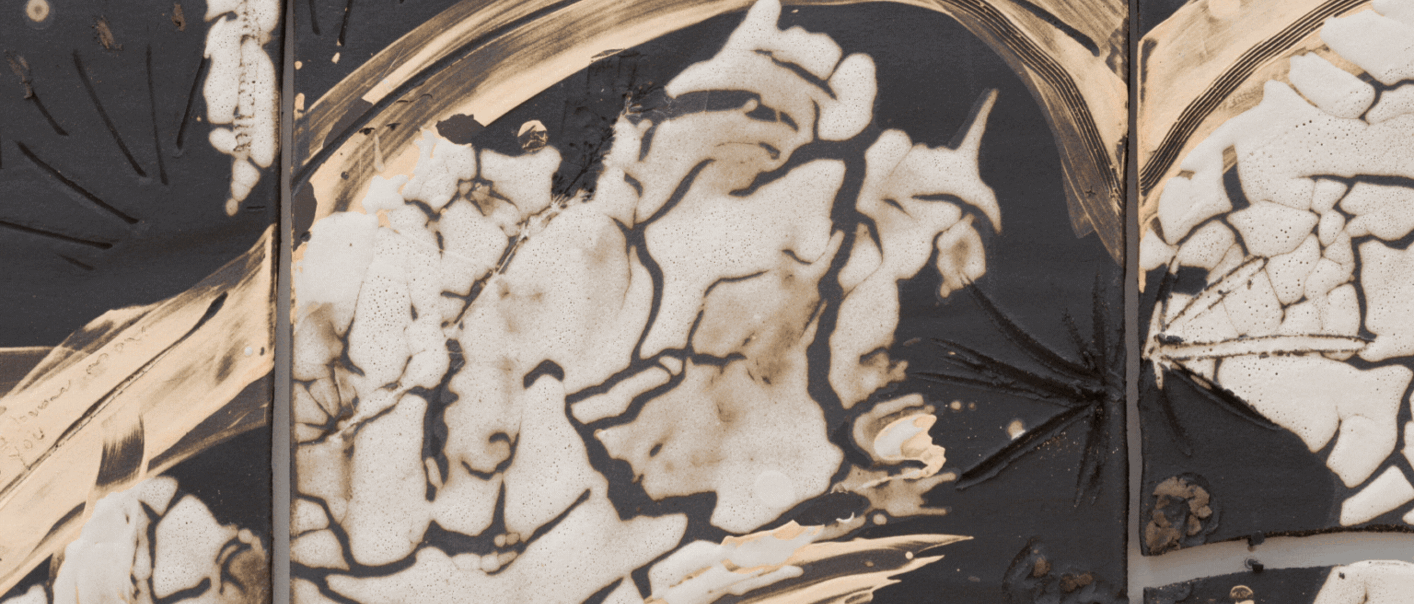

When the shipping magnate, Colin Anderson, bought Francis Bacon’s Figure Study II, 1945-6 on behalf of the Contemporary Art Society in February 1946, it was the very first significant purchase of the artist’s work, and would be the first of seven paintings eventually acquired by the CAS for museums.
The previous year the war in Europe had finally come to an end and in April newsreels horrified the world with images of the liberation of the concentration camps. That same month, Bacon had been included in a group show at the Lefevre Gallery, with his triptych Three Figures at the Base of a Crucifixion, 1944. The work had shocked its audiences, but the artist also gained powerful advocates, such as the artist Graham Sutherland who was the leading British painter at that time. Bacon’s work of the period expressed a sense of visceral horror and stressed the bestial in man’s nature.
In early correspondence with Erica Brausen of the Hanover Gallery, Figure Study II is referred to as “The Magdalen”, making evident Bacon’s repeated use of the crucifixion, devoid of religious transcendence, as a metaphor for humanity in the immediate aftermath of WW2. Like Figure Study II, Head II, purchased from his first solo exhibition at the Hanover Gallery in the autumn of 1949, presents a nightmarishly amorphous humanoid figure, the only recognisable feature of which is a fanged and screaming mouth raised skywards.
The third early painting bought by the CAS, demonstrating how closely the organisation was tracking the development of this spectacular new talent, was Pope I in 1951. Based on Velazquez’s 1650 Portrait of Pope Innocent X with which the artist was fascinated at this period, Bacon’s pope wears a pince-nez – a detail gleaned from Eisenstein’s epochal 1925 film The Battleship Potemkin and found in other key paintings – but, rather than screaming, sits impassively staring the viewer down. The dais on which the pope is enthroned is set within one of Bacon’s characteristic ‘space frames’ and he is hemmed in by a curtain which will also become a recurring element.
Although some resistance was initially expressed by members of the CAS at this forthright instruction for who to buy and from where, the offer was gratefully accepted. Four paintings were duly purchased that year from the Hanover Gallery, each one now recognisably representing one of Bacon’s iconic series. Study for a Portrait of Van Gogh IV, 1957 comes from a transitional moment in the artist’s development, replacing the dry brushwork of earlier paintings with heavy impasto. Attracted to Vincent Van Gogh as emblematic of the figure of the suffering individual, it is likely that Bacon was also influenced by Vincente Minelli’s film portrait of the artist, Lust for Life, that debuted in London shortly before his 1957 exhibition, once again at the Hanover Gallery.
Thus the CAS had already established itself as a bold supporter of Francis Bacon when in 1957 Robert Sainsbury, also an early patron of the painter, approached the charity with a proposition. He wrote to the then Secretary, Pauline Vogelpoel:
" The trustees have asked me to approach the CAS in connection with a gift to the Society which the trustees would like to make out of their income for the year ending 5th April 1957. The gift would be of the sum of £1,600 less income tax, it being understood that the CAS is recognised as a charity for income tax purposes and would be able, in due course, to recover the income tax deducted. In accordance with the purpose of the gift, it would be a condition that the £1,600 be used for the acquisition of four canvases by Francis Bacon; further that the canvases be purchased through the Hanover Gallery as this is the Gallery which normally handles Mr Bacon's work. Naturally, the Society would be entirely free to select the canvases and subsequently regarding their disposal.”
Figures in a Landscape, 1956 is one of a series of canvases depicting powerful male nudes half submerged in tall grass. This last motif can be traced to the influence of Bacon’s trip to South Africa in 1950. In each of the works in this series, it is difficult to determine whether the figures are locked in combat or amorous embrace. The ambiguity, in part an allusion to the artist’s private life, was made necessary by the fact that homosexuality would remain illegal in the UK for another decade.
Two further paintings were acquired; psychologically charged portraits of besuited men, claustrophobically enclosed in narrow interiors. Study for Figure VI, 1956-7 and Study for Figure IV, 1956-7 express an existential agony beneath seemingly conventional appearance.
After a decade of staunch support for Francis Bacon, the CAS did not return to purchase his work again. The seven paintings that were acquired between 1946 and 1957 remain where they were placed, in museums in Aberdeen, Belfast, Birmingham, Huddersfield, Newcastle and Tate where they will always be among the highlights of the collections. One painting went to the Art Gallery of South Australia, Adelaide, as at this period the CAS also supported some institutions in Commonwealth countries.
